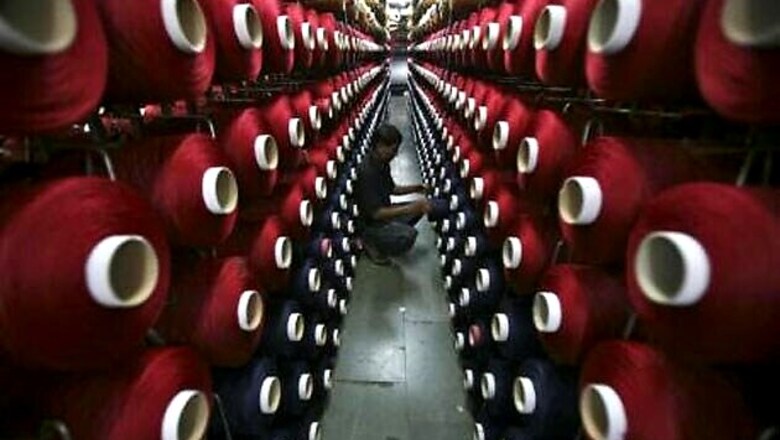
views
India's current account gap narrowed sharply in the September quarter, thanks to steps to curb gold imports, the latest in a run of positive signs for a sluggish economy.
Earlier on Monday, the HSBC Manufacturing PMI index for November showed Indian manufacturing at its strongest since March.
On Friday, data showed that Asia's third-largest economy grew at a faster-than-expected pace of 4.8 per cent in the September quarter, although growth remains near decade lows.
"The numbers are corroborating the perception that things are on the mend and some big risks like current account deficit are no more," said Abheek Barua, chief economist at HDFC Bank.
However, India's balance of payments deficit for July-September grew to its widest in seven quarters. The gap grew as portfolio flows exited in anticipation of a US Federal Reserve decision to scale back its stimulus programme, which also helped send the rupee to a record low in late August.
In a reminder that India's recovery is tepid and uneven, infrastructure output contracted by 0.6 per cent in October after an 8 per cent September jump, data on Monday showed.
"I think we are on target to contain the current account deficit, and despite some concerns expressed in certain quarters we will also contain the fiscal deficit at the target 4.8 (per cent of GDP)," Finance Minister P Chidambaram told reporters.
Also on Monday, Morgan Stanley raised its growth forecast for the current fiscal year to 4.7 per cent from 4.1 per cent, citing the delay in winding down the Fed's stimulus, lower gold imports and with better exports and farm output.
CAD IMPROVEMENT
India's steps to support its currency, including a curb on gold imports, helped to narrow the current account deficit in the September quarter to $5.2 billion, or 1.2 per cent of GDP -the lowest since the June quarter of 2009. In the quarter that ended in September 2012, the gap was $21 billion, or 5 per cent of GDP.
"The current account has showed a strong decline, helped by the fall in gold imports and rupee depreciation," said Sujan Hajra, chief economist at Anand Rathi Securities. "The worst of capital outflows is over."
In a sign of normality returning to economic policymaking after the rupee's steep August drop, the Reserve Bank of India (RBI) earlier on Monday said oil importers would now meet their dollar needs through the forex market instead of using a special dollar window set up to protect the rupee.
The RBI also said on Monday that a concessional swap window it set up to attract inflows during the rupee's tumble had attracted $34 billion through its closing at the end of November -far more than the roughly $25 billion that had been expected.
The rupee rose to a near two-week high on Monday before easing somewhat to close at 62.315/325 per dollar.
India's balance of payments was at a deficit of $10.4 billion for the September quarter, compared with a $200 million deficit a year earlier, RBI data showed. The data was released weeks earlier than expected.
The trade deficit in the September quarter narrowed to $33.3 billion from $47.8 billion a year earlier, while the capital and financial account surplus fell to $5 billion from $20.8 billion year earlier, the data showed.

















Comments
0 comment